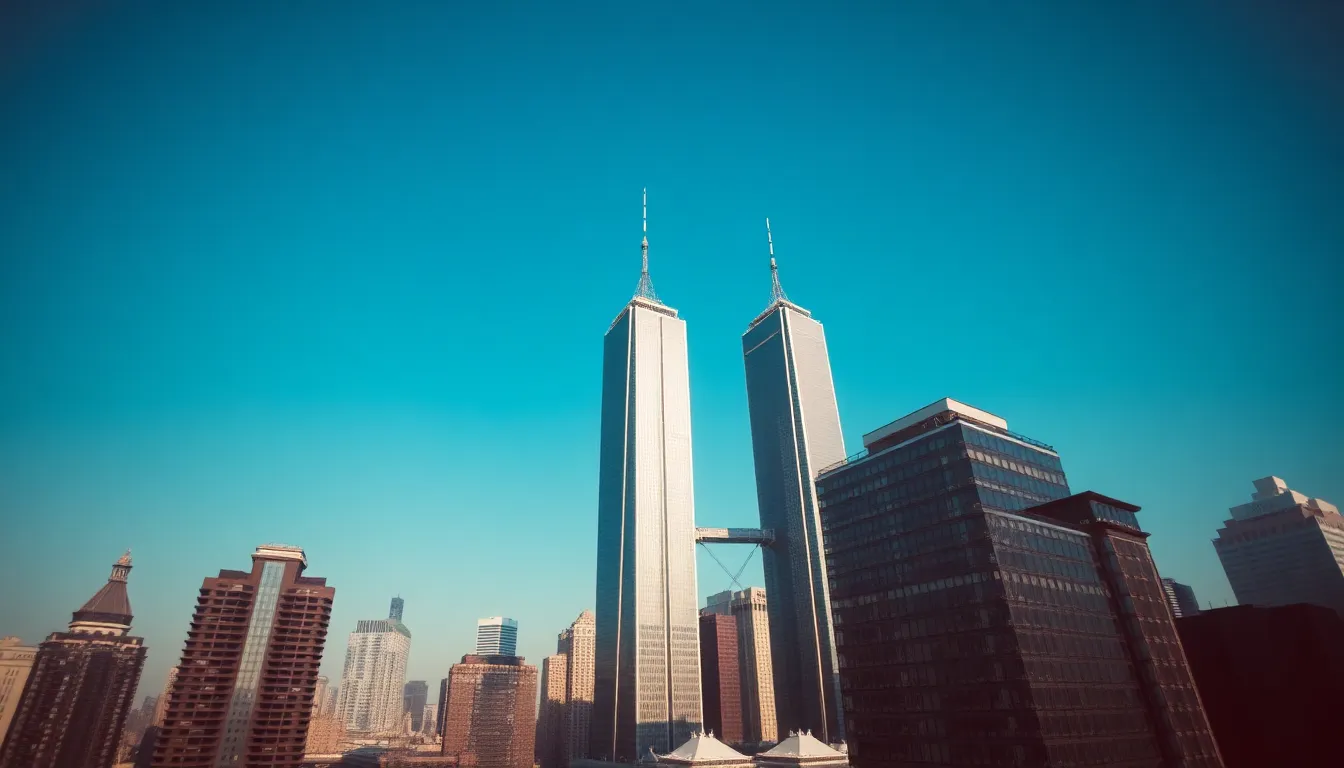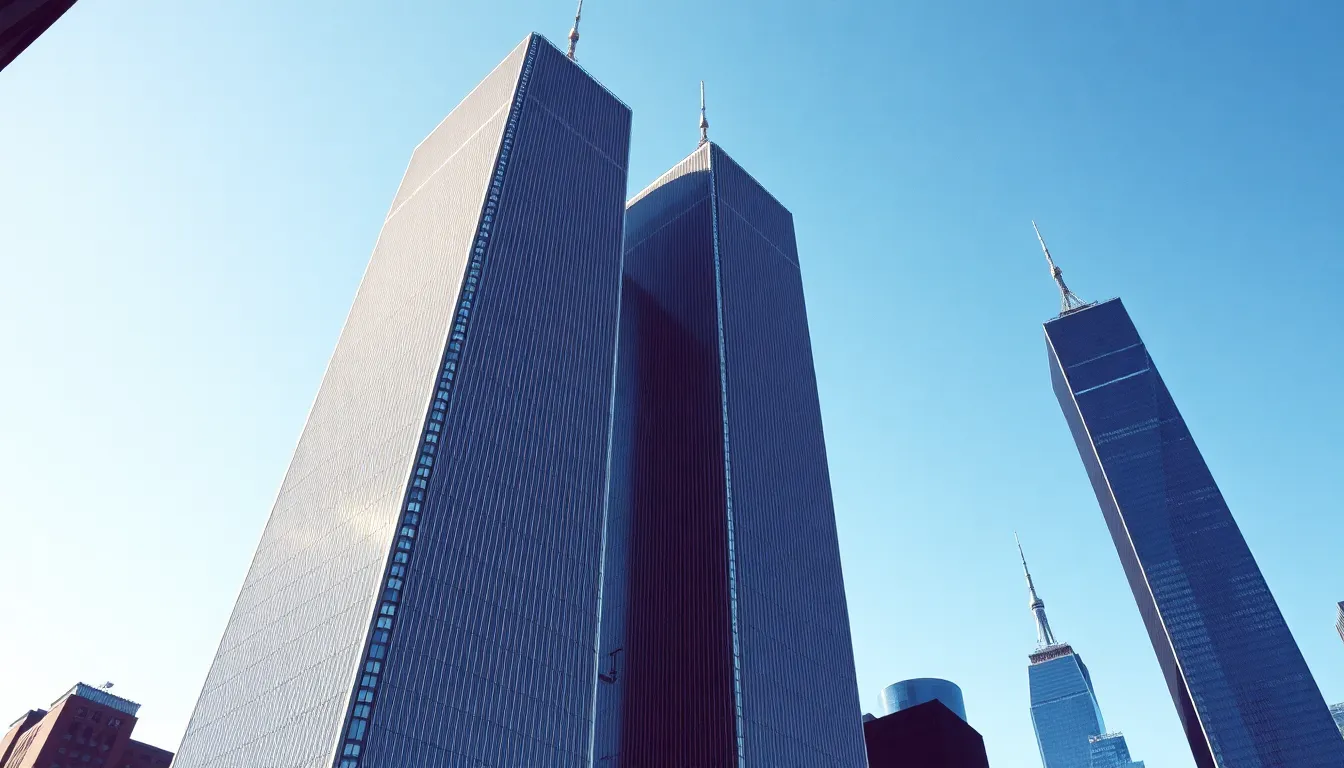On a crisp September morning in 2001, the world watched in disbelief as the Twin Towers, iconic symbols of New York City, met their tragic fate. The date, forever etched in history, serves as a stark reminder of vulnerability and resilience. But why should anyone remember this day beyond the somber reflections? Because understanding the events of that day helps grasp the profound impact on global security, culture, and even our everyday lives.
As we dive into the timeline of when the Twin Towers fell, it’s essential to recognize the ripple effects that continue to shape our world today. So grab your favorite brew, settle in, and prepare to explore not just the facts but the stories that emerged from the ashes. Trust us; it’s a journey worth taking, even if it comes with a few emotional bumps along the way.
Table of Contents
ToggleOverview of the Twin Towers
The Twin Towers, part of the World Trade Center complex in New York City, stood as architectural marvels. Completed in the early 1970s, these towers reached heights of 1,368 feet and 1,362 feet, making them among the tallest buildings in the world at the time. Designed by architect Minoru Yamasaki, the Twin Towers featured a modernist style with a distinctive aluminum façade.
Each tower comprised 110 stories, housing a mix of office spaces, restaurants, and observation decks. The North Tower housed the Windows on the World restaurant, offering breathtaking views of the city. The South Tower featured the Port Authority of New York and New Jersey offices, along with various corporate tenants.
During their operational years, the Twin Towers became cultural icons. They hosted millions of visitors and businesses, serving as key components of New York’s skyline. The complex also featured an underground shopping mall, a hub for commerce and tourism.
Amidst their towering presence, the Twin Towers witnessed significant historical events. They played a role in the economic growth of the 1980s and 1990s. However, they faced challenges, including the 1993 bombing, which marked the first major terrorist attack on the buildings.
Ultimately, on September 11, 2001, the Twin Towers fell, dramatically reshaping the global landscape. Their collapse symbolized vulnerability against terrorism, while also igniting a profound resilience within the nation. The legacy of the Twin Towers endures, influencing discussions about security, architecture, and community values across the globe.
The Events of September 11, 2001

September 11, 2001, marked a day of unprecedented tragedy and transformation in the United States. This date holds a pivotal place in history due to the coordinated terrorist attacks that led to the fall of the Twin Towers.
Timeline of the Attacks
At 8:46 AM, American Airlines Flight 11 crashed into the North Tower of the World Trade Center. Just 17 minutes later, United Airlines Flight 175 struck the South Tower at 9:03 AM. The devastation didn’t end there; at 9:37 AM, American Airlines Flight 77 hit the Pentagon, while United Airlines Flight 93 was prevented from reaching its target due to passenger intervention, crashing in Pennsylvania at 10:03 AM. The South Tower collapsed at 9:59 AM, followed by the North Tower at 10:28 AM. These sequential events crystallized the definition of a global crisis, affecting countless lives and reshaping national security.
Key Players Involved
Fourteen operatives from the terrorist organization al-Qaeda executed the attacks. Osama bin Laden, the leader of al-Qaeda, directed the plot, which involved meticulous planning and extensive resources. The hijackers included individuals from various countries, notably Saudi Arabia. They skillfully guided the planes towards key targets, aiming to inflict maximum damage and instill fear. Emergency responders played a crucial role in the chaos, providing immediate aid and risking their lives to save others. National security agencies also faced scrutiny over their preparedness and intelligence-sharing, highlighting the systemic vulnerabilities present before the attacks.
Immediate Aftermath of the Collapse
In the aftermath of the Twin Towers’ collapse on September 11, 2001, New York City faced an unprecedented disaster. The response involved numerous agencies and individuals dedicated to rescue and recovery.
Emergency Response Efforts
Emergency responders rushed to Ground Zero to help survivors and recover victims. Firefighters, police officers, and EMTs worked tirelessly amidst chaos, navigating debris and smoke. The scale of the disaster prompted immediate mobilization of resources, including urban search and rescue teams from across the country. More than 500 rescue workers arrived on scene within hours, and many others joined the efforts in the following days. Temporary triage centers established near the site provided critical care to the injured. Such rapid response illustrated the bravery and commitment of those who served.
Impact on New York City
New York City’s infrastructure and psyche faced significant blows. Businesses surrounding the World Trade Center suffered immense financial losses due to physical destruction and the resulting economic downturn. Additionally, public transportation systems, including the subway, experienced disruptions that lasted for weeks. Community gatherings emerged, uniting residents in shared grief and resilience, while memorials and vigils honored victims. The emotional and psychological effects lingered across neighborhoods as citizens grappled with the reality of vulnerability. Long-term planning initiatives subsequently focused on rebuilding and enhancing security throughout the city.
Long-Term Consequences
The collapse of the Twin Towers significantly altered the landscape of national security and urban resilience.
Changes in National Security
Changes in national security policies emerged rapidly after the attacks. Authorities introduced the USA PATRIOT Act, expanding surveillance and intelligence-gathering capabilities. Security at airports became stringent, leading to enhanced screening procedures for passengers and baggage. Agencies like the Department of Homeland Security formed to coordinate responses to threats. Moreover, intelligence-sharing between various government entities improved, aiming to prevent future attacks. These adjustments reflected a nationwide shift toward prioritizing safety and preparedness within the public sphere.
The Legacy of the Twin Towers
The legacy of the Twin Towers continues to resonate throughout the world. Memorials at Ground Zero honor the nearly 3,000 victims lost that day, serving as a constant reminder of the tragedy. Architectural and cultural symbols have emerged, with One World Trade Center standing as a beacon of resilience. The events on September 11 instigated discussions around urban security, prompting cities globally to reassess their vulnerability to terrorism. Furthermore, public discourse evolved, emphasizing unity and shared strength in the face of adversity. The impacts of this legacy shape policies, architectural designs, and community values to this day.
The fall of the Twin Towers on September 11, 2001, remains a pivotal moment in history that continues to influence society today. It serves as a stark reminder of the fragility of life and the strength of community in the face of tragedy. The legacy of this event has reshaped national security protocols and urban planning, highlighting the need for resilience in an ever-changing world.
As the years pass, remembering the lives lost and the heroism displayed during the attacks becomes essential. The ongoing discussions surrounding security, architecture, and collective values reflect a commitment to honor those affected by this tragedy. The Twin Towers may have fallen, but their impact endures, inspiring future generations to strive for unity and strength amid adversity.



